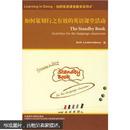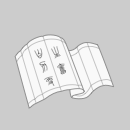
如何策划行之有效的英语课堂活动(剑桥英语课堂教学系列)
¥ 27.2 8.0折 ¥ 34 全新
库存32件
作者林德斯特伦伯格(SethLindstromberg) 著 (美)林德斯特伦伯格 编 编
出版社外语教学与研究出版社
ISBN9787560089416
出版时间2009-10
装帧平装
开本16开
定价34元
货号11257041
上书时间2024-11-20
- 在售商品 暂无
- 平均发货时间 7小时
- 好评率 暂无
- 最新上架
商品详情
- 品相描述:全新
- 商品描述
-
目录
Introduction
1 Warm-ups,breaks and fillers 1:Short energisers
Introduction
Seth Lindstromberg
1.1 Chair swapping for names
Tessa Woodward
1.2 One chair missin9
Pierre Jeanrenaud
1.3 Balloon chase
Paul Sanderson
1.4 I say.you do
Tessa Woodward
1.5 Newspaper bash
Jane Revell
1.6 Staccato start
Tessa Woodward
1.7 Singing start
Tessa Woodward
1.8 Computer talk
Denny Packard
1.9 Bizarre riot
Tessa Woodward
2 Warm—ups,breaks and fillers 2.Speaking
Introduction
beth Llndstromberg
2.1 Bytheway
Seth Lindstromberg
2.2 HOW do you say…
Seth Lindstromberg
2.3 Makethem sayit
Tessa Woodward
2.4 Whatever’S in my bag
Tessa Woodward
2.5 You guess their adjectives
Tessa Woodward
2.6 Think of ten,five,or three things
Tessa Woodward
2.7 Links with music
Clem Laroy
2.8 Aproverb a day
Seth Lindstromberg
2.9 Making stress physical
Tessa Woodward
3 Reviewin9
Introduction
Seth Lindstromberg
3.1 Vocabulary brainshower
Sheila Levy
3.2 Do you know this word?
Hanna Kryszewska
3.3 Recycling
Adriana Diaz
3.4 Student.produced vocabulary reviews
Andrew Glass
3.5 Vocabulary on slips
Sheelagh Deller
3.6 True—false student—student dictation
Sheelagh Deller
3.7 Student—produced reference booklets
Tessa Woodward
3.8 Hidden shape in the puzzle
Adriana Diaz
3.9 Guess who grammar quiz
Denny Packard
4 Communicative pot—pourri
Introduction
Seth Lindstromberg
4.1 The books Oll the shelf
Adriana Diaz
4.2 ETs and earthlings
Adriana Diaz
4.3 Live classroom
Adriana Diaz
……
5 Working with a coursebook
6 Using magazines and newspapers
7 Therme texts,affective texts,stories
8 Writing
9 Language through literature
10 Music and imagination
11 Not just for business people
12 Grammar and register:practice,reflection,review
Bibliography
Index
内容摘要
如何才能够充分调动学生的积极性,使课堂教学富有成效?本书给出了一百余个课堂教学活动,涉及词汇学习、口语练习、阅读、写作、团队协作以及课堂热身或者课堂放松等各种教学活动。无论是以考试为目的的课程,还是专门的商务英语、旅游英语等培训课程,亦或稳扎稳打的学习类课程,都可以在本书中找到操作性强、效果显著的课堂活动。信手拈来便可以用之于课堂,本书无异于英语教师的随身宝典。
精彩内容
3. In your book, mark where the lesson breaks actually fell as you worked through the unit. Did you have to rush through any activity because of time constraints? Did you spend too much time on one section (mainly to kill time) because you knew you didn't have enough time to get through the following section in the time available in that lesson?
4. Look at the unit in your coursebook that you plan to cover next. On the basis of what happened with the unit you've just thought about, see if you can predict: dull bits (texts or exercises your students won't take to), unstimulating lead-ins and uninteresting follow-ons.5. Guess where the lessons breaks will most naturally fall. Sometimes, to avoid rushing through a task you almost (but don't quite) have time for, you should postpone it till the following lesson. However, each time you take this decision, you create a chunk of extra time in the lesson from which an activity has been cut. And this means you will need a filler (or a warm-up).
6. Look through a couple of coursebooks and resource books to see if you can find what you need. (Don't forget to ask your colleagues for tips.) If you're lucky, you may find an activity with aims similar to those of the longer activity you have postponed. Or perhaps your students might in fact best profit from doing a review activity (see Chapter 3). Or perhaps after a long battle with one topic it might actually be more appropriate to change to something completely different. ……
相关推荐
-

如何策划行之有效的英语课堂活动
八五品濮阳市
¥ 4.50
-

如何策划行之有效的英语课堂活动
八五品长沙
¥ 13.42
-

如何策划行之有效的英语课堂活动
八五品滁州
¥ 13.40
-

如何策划行之有效的英语课堂活动
八五品南昌
¥ 13.60
-

如何策划行之有效的英语课堂活动
八五品孝感
¥ 13.30
-

如何策划行之有效的英语课堂活动
八五品菏泽
¥ 13.60
-

如何策划行之有效的英语课堂活动
八五品南昌
¥ 12.00
-

如何策划行之有效的英语课堂活动外研社9787560089416
八五品重庆
¥ 9.90
-

Learning in Doing·剑桥英语课堂教学系列:如何策划行之有效的
八品宁波
¥ 11.90
-

如何策划行之有效的英语课堂活动(剑桥英语课堂教学系列)(
全新北京
¥ 25.31
— 没有更多了 —














以下为对购买帮助不大的评价